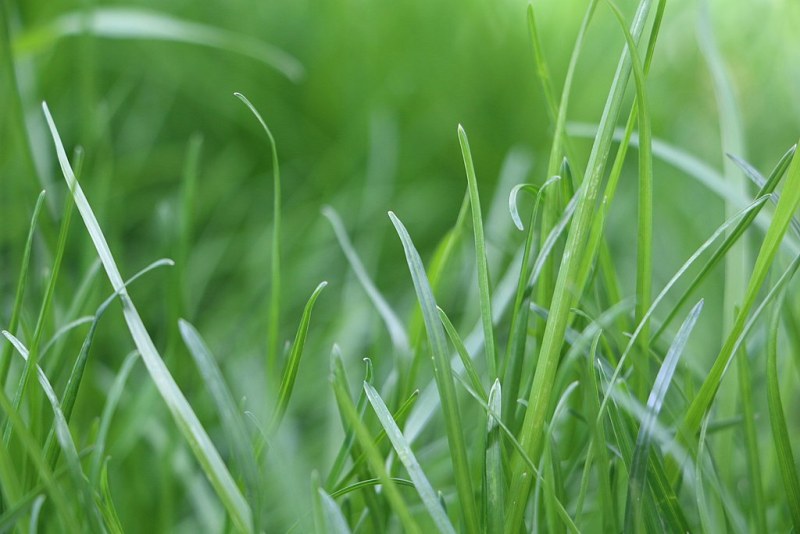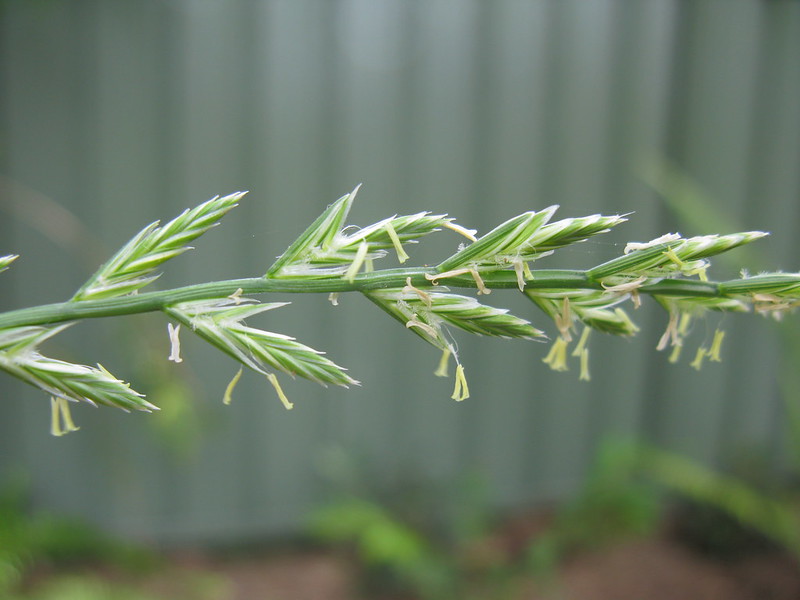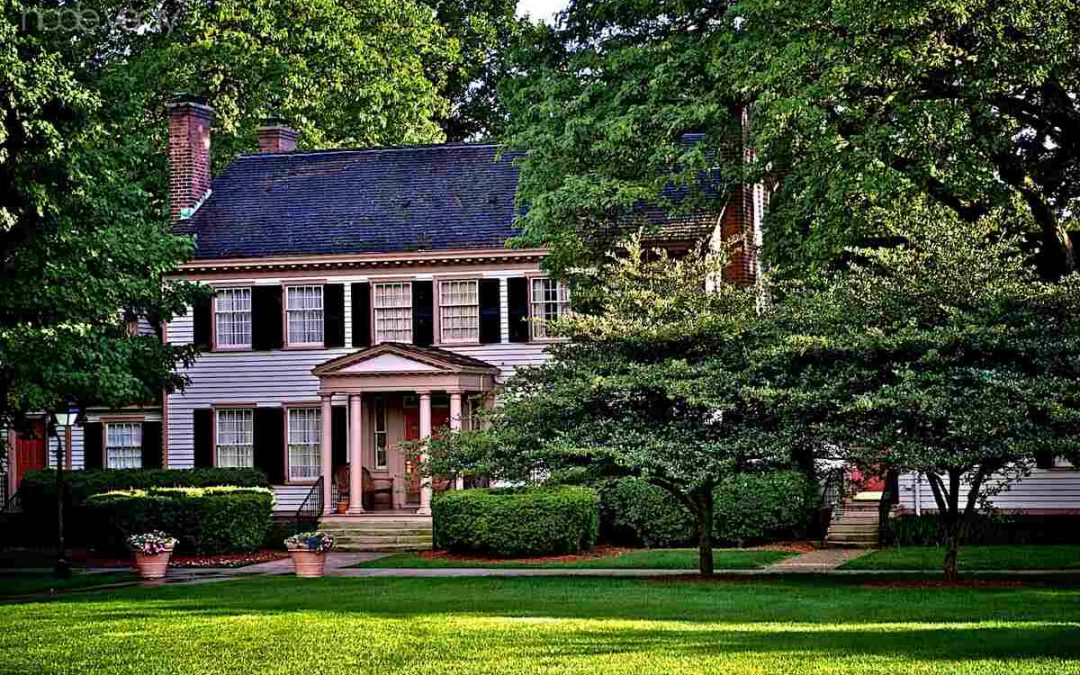In Dearborn, we get to enjoy all four seasons to the fullest. So do our plants. The balanced mix of rain, shine, and mild temperature is great for most plants. And candidly, it wouldn’t be fair to live in a plant-friendly city and not have an amazing lawn to flaunt.
Four grass types, in particular, thrive in this environment, and understanding them will help you achieve a fantastic lawn.
In this article:
The 4 Best Grass Types for Dearborn
There are generally two categories of grass: warm-season and cool-season. Warm-season grasses tend to grow thicker and lusher in warmer climates. However, it can get rather chilly in the Midwest, and Michigan is no exception.
Proximity to the Great Lakes means a lot of cool breezes, so you’ll want to choose cool-season grasses. These grasses germinate faster and perform better in temperatures between 60 degrees and 75 degrees Fahrenheit, making them well-suited for mild summers.
Here are the grass types that will give you an amazing lawn.
1. Kentucky Bluegrass

Photo Credit: Pilot138-17 / Wikimedia Commons / CC BY-SA 4.0
Kentucky Bluegrass is the most popular and well-known type of turfgrass in Michigan. This cool climate varietal spreads quickly, perhaps even aggressively, in some areas. Its rapid growth allows it to effectively patch bare spots in your lawn, and it provides a visually appealing blue-green turf.
While Kentucky bluegrass prefers full sun, it can also tolerate light shade and some cloudy days. It performs best in well-drained, fertile soil with a higher pH between 6.0 and 7.0, but it can also grow in the sandier soil of lakeshore regions.
However, Kentucky bluegrass does not hold up well to foot traffic. And it is a maintenance-intensive grass, requiring constant watering and a lot of fertilizer to thrive. With its shallow roots, bluegrass is also less resistant to drought and heat than other grass types.
Classification: Cool-season grass
Spreads by: Rhizomes (underground stems)
Shade tolerance: Low (prefers sunlight)
Drought tolerance: Moderate
Foot traffic tolerance: Moderate
Maintenance needs: Medium to high
Mowing height: 1.5-3 inches
Potential for disease: Moderate
2. Fine Fescue
Fine fescue encompasses several kinds of grass, all of which tolerate shade and drier soil conditions. In fact, numerous grass seed mixtures contain some percentage of fescue with the intent to pass on the species’ shade and drought tolerance.
The fescue grasses are Chewings fescue, creeping red fescue, sheep fescue, and hard fescue. Each varietal grows with a gray-green color and a fine texture to its leaves. In addition, fine fescues do not require as much maintenance as other grasses
While fine fescue benefits many seed mixes, it’s rare to see it grown alone. Overwatering, excessive fertilization, and rapid thatch development can cause thinning in a fine fescue lawn, especially during the summer.
Classification: Cool-season grass
Spreads by: Red fescue spread by below-ground rhizomes, while hard and Chewings fescues are bunch-forming and spread through tillers.
Shade tolerance: High
Drought tolerance: High
Foot traffic tolerance: Low to moderate
Maintenance needs: Low
Mowing height: 3-4 inches
Potential for disease: Moderate
3. Tall Fescue
Tall fescue is a popular cool-season grass that tolerates all but the most severe of cold weather conditions. As indicated by its name, this grass grows taller than most species.
One of the biggest benefits of tall fescue is its ability to control and limit weed growth. Its height allows it to dominate sunlight intake over weeds that may be lurking. In addition, tall fescue is a low-maintenance grass that requires occasional watering and a small amount of fertilization.
However, tall fescue’s growth rate, combined with its height, means that you will need to mow your lawn more often. And it may not be an ideal choice if you find coarse grass objectionable.
Classification: Cool-season grass
Spreads by: Bunches, occasionally rhizomes
Shade tolerance: Moderate
Drought tolerance: High
Foot traffic tolerance: High
Maintenance needs: Low
Mowing height: 2-3 inches
Potential for disease: Low
4. Perennial Ryegrass

Photo Credit: Harry Rose / Flickr / CC BY 2.0
Perennial ryegrass is a hardy and drought-resistant varietal that stays green in dry conditions. Once planted, this grass grows and spreads quickly, allowing it to act as an erosion-controlling factor. In addition, it holds up well to foot traffic.
Because of their similar qualities, perennial ryegrass is often mixed with Kentucky bluegrass to keep your lawn verdant during times when other grass types would typically go dormant.
Part of the reason perennial ryegrass is seen in mixes is that despite its resilience, it does not tolerate high heat or intense cold on its own. Ryegrass, alone, also has a poor mowing quality due to its tough, fibrous leaves.
Classification: Cool-season grass
Spreads by: Bunches
Shade tolerance: Low
Drought tolerance: Moderate
Foot traffic tolerance: High
Maintenance needs: High
Mowing height: 1.5-2.5 inches
Potential for disease: Very high, including brown patch, red thread, and rust
FAQs
A mix of fine fescue and perennial ryegrass will have the highest chance of maintaining a healthy green color all year round. Both types of grass are drought resistant and complement each other’s strengths while shoring up their weaknesses.
Cool-season grasses perform well in the Michigan climate, and the best time to plant them is mid-to-late fall. The general rule of thumb is to plant cool-season grass at least 45 days before the estimated time of the first frost.
Fine and tall fescues are very easy to maintain. They are both hardy and crowd out weeds, though tall fescue does so better than fine fescue.
Final Thoughts
To maintain a beautiful lawn in Dearborn, Michigan, you will need to plant cool-season grasses that can stand up to the chill of the Midwest. You’ll also need to take the proper steps to care for that grass once it’s established. If you would like help with mowing, landscaping, and other general yard maintenance, feel free to hire a lawn care professional to put your mind at ease.
Main Image Credit: Nicole Yeary / Flickr / CC BY 2.0

